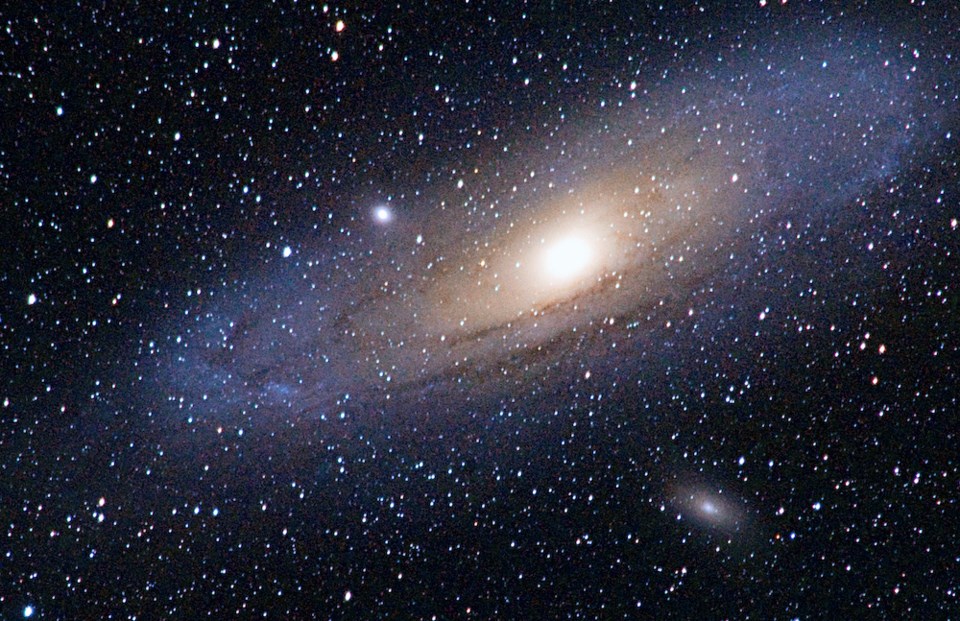We’ve had some beautiful evening views of Venus this year but that’s over for now as it passes between us and the sun on Aug.12 at inferior conjunction. The orbit of Venus is tilted somewhat from our own and it’s about eight degrees south of the sun at that time. It will reappear in the morning sky by the end of August and remain through the rest of the year.
There will be two full moons in August: on the first and the 30th. Neither will be blue (to disparage that silly moniker) but both will be close to lunar perigee so for each we’ll have very high and low tides with the latter being a touch more extreme. Maximum tidal ranges seem to follow full and new moons by about one to two days, for reasons that elude me.
By about Aug. 10, the waning moon won’t rise until after midnight, giving us a great chance to see the Perseid meteor shower. For a few days around the peak at midnight on Aug. 12, we’ll have glare-free skies until almost 0300. The Zenithal Hourly Rate (ZHR) for this one is quoted as 90/hr but it can vary widely; my guess is we’ll see about 60. No visual aids needed – find a comfortable spot with a wide view of the sky, lie back, look up and enjoy!
The Perseid viewing opportunity also lets you admire the summer Milky Way. Just before midnight Aug. 12, the bright star Capella in Auriga is low in the NNE. Above it to the right are the not-as-bright stars of Perseus, from whence come the Perseid meteors. That’s just a naming convention, by the way; the meteors have nothing to do with the stars and everything to do with the debris trail from a comet called 109P/Swift-Tuttle. It orbits the sun about every 133 years and the meteors appear to radiate from a point near the constellation.
From Perseus you can follow the glow of the Milky Way to Cassiopeia – the big “W.” Halfway between the two is the Double Cluster, visible to the naked eye and striking in binoculars. There are many star clusters en route to Cassiopeia visible with binoculars. Follow the glow to Deneb, nearly overhead and the bright star in the tail of Cygnus the Swan, one of the few constellations that actually looks like its namesake. While it’s pretty, blue-white and twinkly, it’s also a blue supergiant star that appears to have started burning helium at its core and is headed for a supernova. Its luminosity is between 100,000 and 200,000 times that of our sun – think SPF 2 million. It’s one of the brightest stars in our galaxy, and when the bang does come, we’ll be thrilled to be 1,500 light-years (ly) away from the fireworks. From Deneb look to the right along the Swan to the star at its head, Albireo. It’s just left of a mid-line between Vega and Altair, the two other stars in the Summer Triangle. Although I’ve only resolved them in a telescope, Albireo is actually a binary system with one star distinctly yellow and the other a striking blue.
While near Deneb, you may notice that the Milky Way glow appears split, with an irregular dark stripe through the middle – the Great Rift. With a dark sky you can trace this split all the way to Sagittarius on the SSW horizon. It’s the obscuration caused by clouds of dust in the main plane of our galaxy. Sagittarius is the teapot-shaped asterism just above the horizon; just to the right of it and about 27,000 ly distant is the centre of our galaxy, home to many stars and a black hole estimated to contain about 4.3 million solar masses. While it’s scary enough around Deneb, this place qualifies as a VERY rough neighbourhood! Some of the closest stars to it orbit at a significant fraction of the speed of light and if/when a star gets dragged in, the radiation release as it shreds is incomprehensible.
A copy of Terence Dickinson’s book, Nightwatch, and a pair of binoculars will keep you busy for years exploring the sights in our galaxy but there’s one more attraction to see beyond our own: the Andromeda Galaxy. From Cassiopeia, follow the rightmost ‘V’ down about 20 degrees to the curve of bright stars that lead right to the big square of Pegasus. The ‘V’ points to Mirach; with the binocs, look up about one field-of-view to another less bright star, then repeat. You should see another not-so-bright star up and left and a faint blurry object up and to its right. The latter is our sister galaxy – Andromeda, aka M31. It’s somewhat bigger than our own and is about two million ly distant. It’s the most distant object easily visible to the naked eye and the light you see left before our species evolved.
So, August offers an excellent shot at the Perseids and, if your eyes are good, an easy galaxy “twofer.” At the risk of repeating myself, I can tell you from personal experience there is no better opportunity to get kids interested in astronomy and no better way than to supply a copy of Terence Dickinson’s book, Nightwatch, and a pair of binoculars.
While the Sunshine Coast Astronomy Club has paused its public meetings for the summer, there will be members in attendance during many events. Please check the club website for details at: https://sunshinecoastastronomy.wordpress.com/




